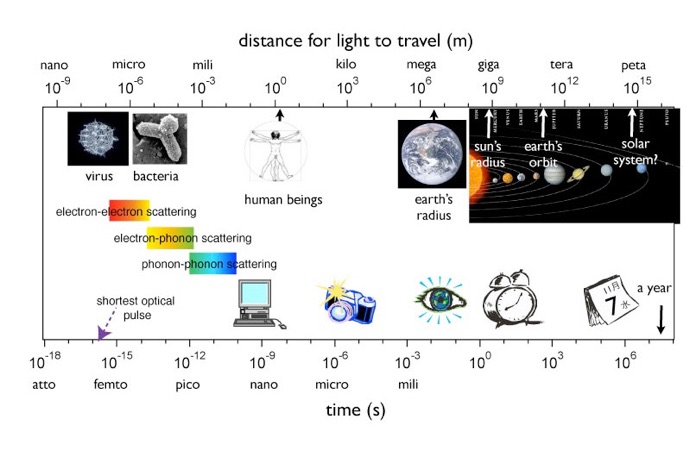 |
It’s not easy to imagine exactly how short a femtosecond is, when it is a thousand million times shorter than a blink of our eyes. Here’s how we can approach to this unusual unit by a simple math. |
Our lab uses femtosecond pulse lasers to study electronic excitation and phononic oscillations in solids. A femtosecond is 10-15 second or a quadrillionth of a second.
There’s a trick to grasp exactly how short a femtosecond is. Astronomers use the unit of “light year” to describe very large distances. One light year, or the distance the light travels over the time span of a year, is roughly 9.461 quadrillion km in our daily unit.
Very short time can be described the other way round. For example, we can consider 1 microsecond, or one millionth of a second, as 300 light meters, using the distance the light can travel during the time span. In this scheme, a femtosecond is 0.3 light micrometers, which is roughly the size of a virus.


